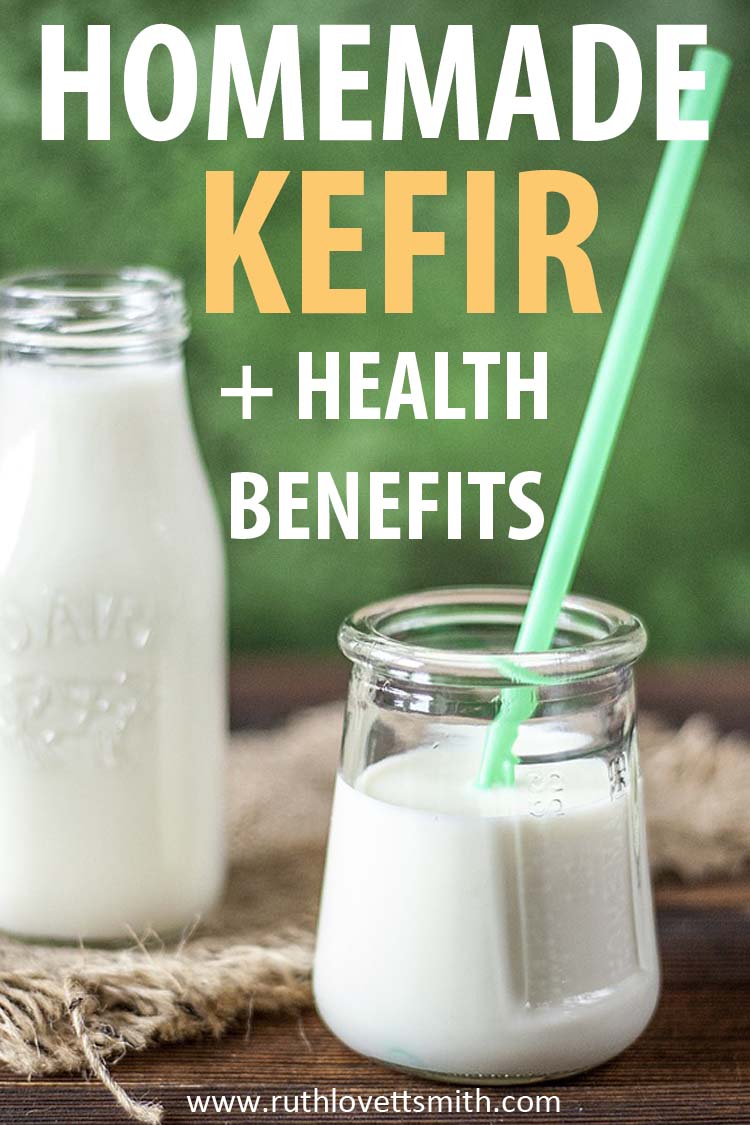How to Make Homemade Kefir + Kefir Health Benefits
This post may contain affiliate links. I may receive a commission if you decide to make a purchase through my links. For more information, see my full disclosures here. Looking for FREE Canva templates, printable planners, cards, wall art, design elements, projects, activities, and more? Check out my Freebie Library Club.
Are you thinking about making homemade kefir?
One of my life goals this year is putting my health first. Therefore, this involves more exercise, more vegetables, and a new addition to my healthy eating plan: kefir.
What is Kefir?
First of all, Kefir is a fermented milk drink made from kefir grains. Secondly, it has a tart flavor, similar to a drinkable yogurt. Finally, it can be made from any type of milk including cow, goat, sheep, coconut, rice, or soy; which makes it perfect for individuals with dairy allergies.
Why Drink Kefir?
Because kefir is a fermented milk, it is full of probiotics, vitamins, and minerals. Do a quick internet search and you will find how important probiotics are to your gut, and overall health and well being.
Why Homemade Kefir?
When you make your own kefir, you know exactly what goes into it.
You can purchase kefir at the grocery store. However, there are often extra ingredients added to thicken and preserve it. Therefore, it makes sense to make your own kefir.
Making homemade kefir is also simple, inexpensive, and you end up with a better product.
Kefir Making Supplies
Kefir Grains
Making homemade kefir starts with purchasing kefir grains. I purchase my Organic Milk Kefir Grains on Amazon.
You can purchase dry grains (that need to be re-hydrated) or active grains, that you an use right away. Hydrated kefir grains look similar to cottage cheese curds.
You’ll want to follow the instructions that come with your grains, however following is a general guide of what is involved.
Type of Milk
When first making homemade kefir you’ll need kefir grains, and pasturized milk. Above all, avoid ultra pasturized milk.
Ultra pasturized milk goes through a high heating process, therefore it has very little bacteria left in the final product.
I personally prefer organic milk and/or antibiotic free milk made from grass fed cows.
Other Supplies
You’ll also need a glass mason jar, coffee filter, rubber band, fine mesh filter (plastic or stainless steel), and plastic spoon. Avoid using any types of metal aside from stainless steel.
How to Make Kefir
A good kefir grain to milk ratio is 1 tablespoon of kefir grains to 1 cup of milk. Put your kefir grains and milk in a glass jar, cover with a coffee filter and rubber band, and leave the jar in a warm place for 24 to 36 hours. (The best temperature for kefir making is 72-80 degrees Fahrenheit.)
Your kefir is ready when it has thickened and has a tart taste. Typically it takes a while for kefir grains to revive and get back to full strength, hence you’ll throw away the first batch or two.
Over time, your kefir grains will multiply. This means you can start adding more milk. As a result, you’ll end up with more kefir.
You can drink kefir plain, or add vanilla or fruit juice to sweeten it a bit. My boys drink it up in a morning or snack smoothie.
Check out my kefir smoothie recipe by clicking on Strawberry Banana Kefir Smoothie Recipe.
Following are a list of supplies that might be helpful:
Organic Milk Kefir Grains and Ebook
Ball Mason Wide Mouth 16oz Jars
Ball Wide Mouth Plastic Storage Caps






Please see our Privacy Policy for more information on the data we collect.